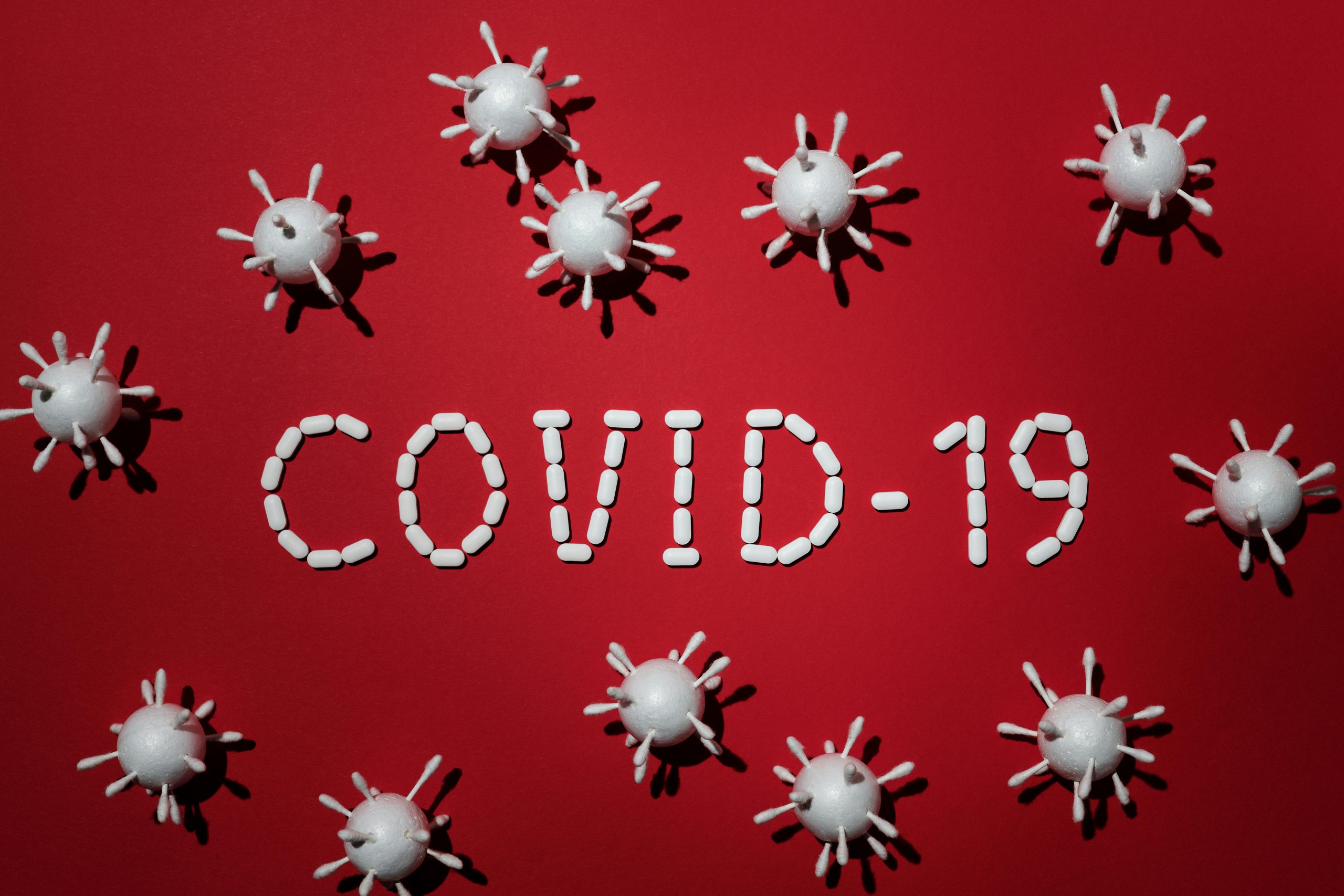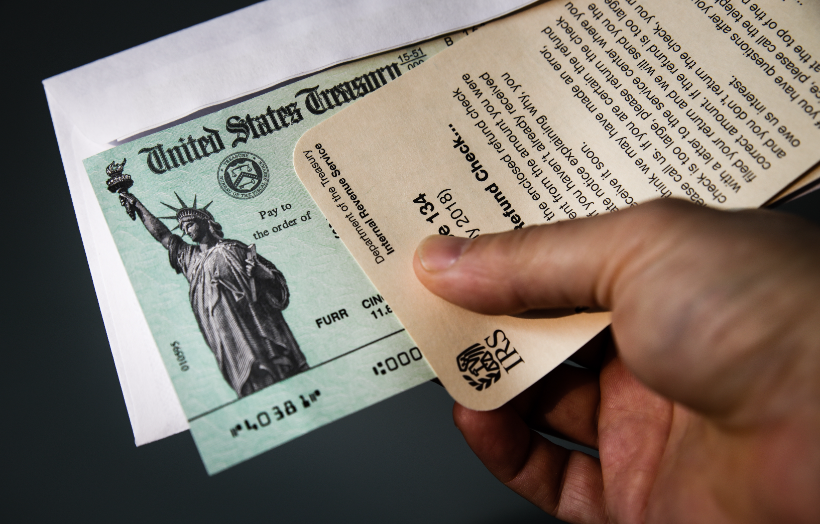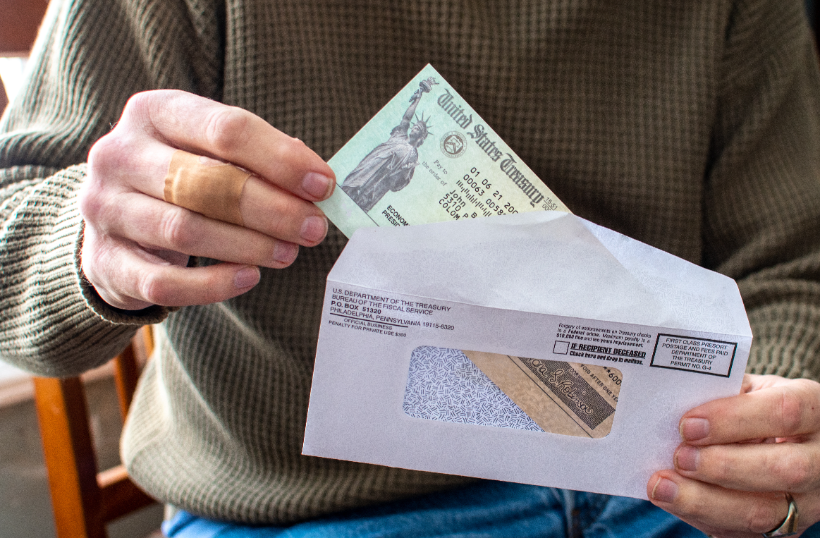Preguntas frecuentes sobre cheques de estímulo
Publicado:Todo lo que debe saber sobre los pagos de estímulo de COVID
El Plan de Rescate Americano de $1,9 billones fue firmado por el Presidente Biden el 11 de marzo de 2021. Se trata del tercer gran paquete federal de estímulo centrado en el alivio de la COVID-19. Contiene una serie de disposiciones, incluidos $1.400 cheques de estímulo para millones de estadounidenses.
Esta página ofrece detalles importantes sobre los cheques de estímulo contra el coronavirus, con información actualizada sobre la tercera ronda de pagos de estímulo. Aquí encontrará las respuestas a las preguntas más frecuentes sobre los cheques de estímulo.
¿Existe un tercer cheque de estímulo?
Sí. La tercera ronda de cheques de estímulo fue autorizada recientemente por el Plan de Rescate Americano, que se convirtió en ley el 11 de marzo. Se calcula que aproximadamente "85% de los hogares estadounidenses" recibirán esta vez cheques de estímulo (en una declaración del Presidente Biden).
RELACIONADO: Plan de rescate estadounidense de 1,9 billones de dólares firmado como ley
¿Quién puede optar a un cheque de estímulo?
Las normas de elegibilidad se basan en sus ingresos anuales, más concretamente, en su Renta Bruta Ajustada (RBA). Esta cifra se informa normalmente en su declaración de impuestos 1040 cada año. El IRS mira el AGI de su declaración de impuestos más reciente (del año fiscal 2019 o 2020) para determinar si usted califica para un cheque de estímulo.
Para tener derecho a la ayuda, una persona soltera debe tener unos ingresos anuales iguales o inferiores a 75.000 PTT o, en el caso de un matrimonio que presente la declaración de la renta de forma conjunta, sus ingresos combinados deben ser iguales o inferiores a 150.000 PTT. No podrá optar al tercer cheque estímulo si sus ingresos son iguales o superiores a 80.000 PTP (para una persona soltera) o iguales o superiores a 160.000 PTP (para un matrimonio que declare conjuntamente).
RELACIONADO: ¿Cómo se puede optar a un cheque de estímulo?
¿A cuánto asciende mi cheque de estímulo?
Una persona con derecho a percibir el importe íntegro del tercer cheque de estímulo recibirá $1.400 (para una persona con derecho a percibir el importe íntegro del tercer cheque de estímulo).
pareja casada que presenta una declaración conjunta esa cantidad es de $2.800). Si su unidad familiar tiene
dependientes, obtendrá $1.400 adicionales por cada dependiente.
Existe una tasa de eliminación progresiva para las personas que ganan más de $75.000 y los matrimonios que ganan más de $150.000. Una persona soltera está sujeta a una tasa de eliminación progresiva de 28%, lo que significa que su cheque de estímulo de $1.400 se reducirá en $280 por cada $1.000 que gane por encima del umbral de $75.000. Un matrimonio sin hijos a cargo también está sujeto a una tasa de reducción progresiva de 28%, mientras que un matrimonio con un hijo a cargo está sujeto a una tasa de reducción progresiva de 42%.
RELACIONADO: Cheques de estímulo de $1,400: la tercera ronda de pagos directos está en camino
¿Cuándo recibiré mi cheque de estímulo?
Según la Casa Blanca y el Departamento del Tesoro, la tercera ronda de cheques de estímulo se enviará tan pronto como el sábado 13 de marzo. Esto se aplica a los pagos de depósito directo para las personas que ya tienen su información de cuenta bancaria en los archivos del IRS. Si usted no tiene Depósito Directo con el IRS, usted debe esperar recibir un cheque de papel o tarjeta de débito prepagada en el correo.
Si desea saber cuándo le llegará el dinero del estímulo, el IRS pone a su disposición una herramienta en línea llamada "Get My Payment" (Obtenga mi pago) que la gente puede utilizar para seguir el estado de su cheque de estímulo.
>> >> Revise el estatus de su pago de estímulo
La herramienta "Get My Payment" se actualiza cada 24 horas. El IRS anima a la gente a utilizar esta herramienta en línea en lugar de tratar de llamar al IRS porque sus agentes de llamadas no tienen más información que la que aparece en el sistema "Get My Payment".
¿Cómo puedo obtener un cheque de estímulo?
Muchas personas recibirán un cheque de estímulo automáticamente porque el IRS tiene su información de ingresos en el archivo. Si su nivel de ingresos le da derecho a un cheque de estímulo, recibirá el dinero por depósito directo, cheque impreso o tarjeta de débito prepagada. Usted tendrá que tener Depósito Directo establecido con el IRS para que la agencia pueda enviar el pago directamente a su cuenta bancaria. De lo contrario, Hacienda le emitirá un cheque en papel o una tarjeta de débito prepagada y se lo enviará a su dirección postal. Tenga en cuenta que tardará más en recibir su cheque de estímulo si no tiene Depósito Directo.
RELACIONADO: ¿Quién no recibirá un cheque de estímulo? Es posible que no reciba su pago automáticamente
¿Cuántos cheques de estímulo hay?
Ya son 3 los cheques de estímulo que ha autorizado el Gobierno federal. La primera ronda de $1.200 cheques de estímulo fue autorizada por el Ley de Ayuda, Alivio y Seguridad Económica contra el Coronavirus (también conocida como Ley CARES) en marzo de 2020. La segunda ronda de cheques de estímulo $600 fue creada por el Ley de desgravación fiscal relacionada con COVID en diciembre de 2020. La tercera ronda de $1.400 cheques de estímulo fue autorizada recientemente por el Plan de Rescate Americano.
¿Habrá otra ronda de cheques de estímulo?
Probablemente sea demasiado pronto para saber si habrá una cuarta ronda de cheques de estímulo. Dependerá del estado de la economía del país y de si el coronavirus sigue siendo una amenaza para la salud pública. Permanezca atento a las continuas actualizaciones sobre la situación del COVID-19 y los cheques de estímulo.



